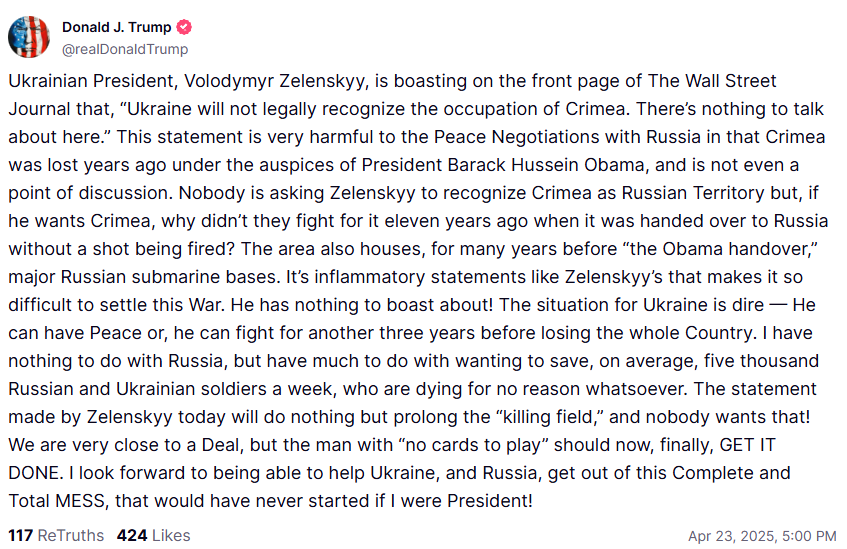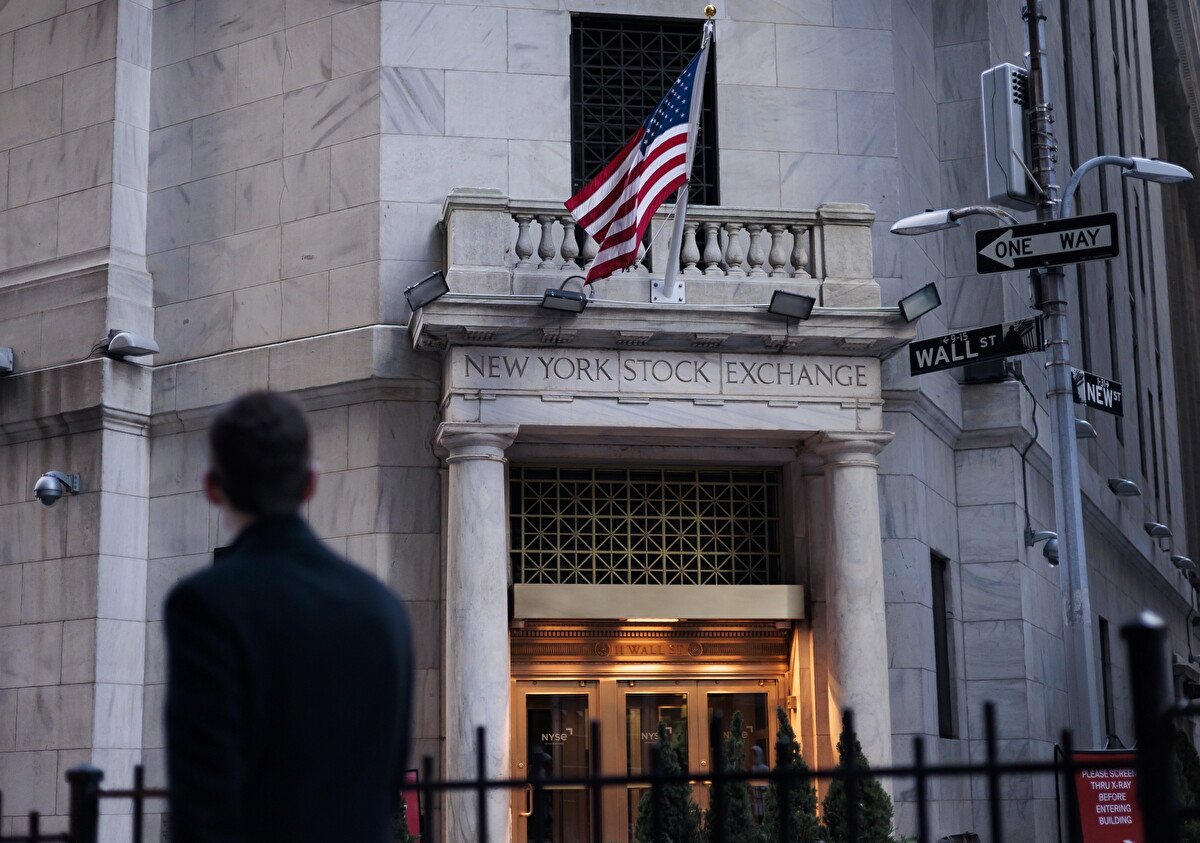The United States has threatened to “walk away” from negotiations involving the war in Ukraine unless Kyiv agrees to a cease-fire deal that reportedly recognizes Russian control over occupied territories and renounces its NATO aspirations, Vice President J.D. Vance said Wednesday.
Vance described the U.S. proposal as “clear” and explained the plan would freeze the current battle lines, effectively acknowledging Russia’s annexation of Crimea and consolidating its hold over parts of the Donbas. In return, Washington promised to facilitate an end to hostilities and a better future for both nations — though details remain vague.
“We’ve issued a very explicit proposal to both the Russians and the Ukrainians, and it’s time for them to either say yes or for the United States to walk away from this process,” Vance told reporters in New Delhi. “The only way to really stop the killing is for the armies to both put down their weapons, to freeze this thing and to get on with the business of actually building a better Russia and a better Ukraine.”
According to diplomatic sources cited by Axios, the proposal includes the partial rollback of sanctions imposed on Russia since 2014 and envisions a redrawn map “aligned closely with the current frontlines.” Vance indicated a potential “exchange of territory” but offered no specifics on which regions, if any, Russia might be expected to return, nor whether the plan had already been shared with President Vladimir Putin.
According to the Financial Times, the idea of halting the war along current frontlines was reportedly endorsed by the Russian leader during a recent meeting in St. Petersburg with Trump’s special envoy, Steve Witkoff. Asked about the report, Kremlin spokesman Dmitry Peskov said “a lot of fakes” were circulating, including from respected outlets, and urged reporters to rely only on “primary sources”.
Washington’s outline appears to echo many of the Kremlin’s long-standing demands. Putin has repeatedly asserted that any resolution to the war — launched with his full-scale invasion on February 24, 2022 — must incorporate Russia’s “strategic interests” and “security concerns.” That includes sovereignty over four partially occupied Ukrainian regions (Donetsk, Luhansk, Zaporizhzhia, and Kherson), annexed in late 2022, alongside Crimea, and Ukraine’s formal renunciation of NATO membership. Russia has also made clear it wants Ukraine to scale back its armed forces significantly.
Several assessments, including one from the DeepStateMap open-source project, estimate that Russian forces currently occupy roughly one fifth of Ukrainian territory. If implemented, the U.S. plan would lock in that reality, effectively cementing Moscow’s hold over much of eastern Ukraine.
Axios also reported that Washington’s blueprint includes unspecified “security guarantees” for Ukraine — largely to be provided by European nations, with possible participation from third-party states such as China and India. It also touches on postwar reconstruction but offers no clarity on funding sources. Some gestures toward compromise were hinted at, including the potential return of a portion of Kharkiv oblast currently under Russian control and guaranteed navigation access along parts of the Dnipro River, which cuts across the southern front.
The Kremlin reacted with cautious optimism. “We welcome American efforts at mediation. Talks are ongoing, but many complexities remain,” Putin’s spokesman Dmitry Peskov said.
Reaction in Kyiv was far less enthusiastic. “We’re ready to negotiate — but not to surrender,” Ukraine’s Economy Minister Yulia Svyrydenko posted on X. “We will not sign any agreement that allows Russia to regroup and strike us harder later.”
President Volodymyr Zelenskyy has not commented directly on the proposal. However, speaking Tuesday, the Ukrainian leader dismissed outright any notion of conceding Crimea: “There is nothing to discuss. That would violate our Constitution. This is Ukrainian land.”
Zelensky’s comments drew harsh criticism from Trump, who on Wednesday accused the Ukrainian leader of trying to prolong what he called “the killing field.”
“Nobody is asking Zelenskyy to recognize Crimea as Russian Territory but, if he wants Crimea, why didn’t they fight for it eleven years ago when it was handed over to Russia without a shot being fired?”, Trump wrote on Truth Social.
“It’s inflammatory statements like Zelenskyy’s that makes it so difficult to settle this War,” he added, calling a deal with Russia “very close” and urging the Ukrainian president to choose between peace or “fight for another three years before losing the whole Country.”

The U.S. pressure campaign comes as European powers attempt to revive a multilateral negotiation track — one that appears increasingly fraught. After last week’s summit in Paris, a follow-up meeting in London was scheduled for Wednesday, involving foreign ministers from the U.K., France, Germany, Ukraine, and the U.S.
But the process was abruptly derailed overnight by U.S. Secretary of State Marco Rubio, reportedly frustrated with Zelenskyy’s hard line on Crimea. The breakdown was compounded by a confidential memo sent by Kyiv to European capitals Tuesday evening, categorically rejecting any discussion of territorial concessions prior to a full cease-fire.
Rubio’s withdrawal was soon mirrored by his British counterpart David Lammy, who instead opted for a separate bilateral meeting with Ukrainian deputy foreign minister Andrii Sybiha. Working-level talks continued in London with senior officials from all sides.
“We are working at pace with U.S., Ukraine and European allies to end the war and secure a just and lasting peace,” Lammy posted on X later Wednesday. British Defense Secretary John Healey held a meeting with Ukrainian Defense Minister Rustem Umerov, while U.S. special envoy Keith Kellogg — widely regarded as the architect of the U.S. ultimatum — attended a closed-door lunch with national security advisers from London, Berlin, and Paris.












